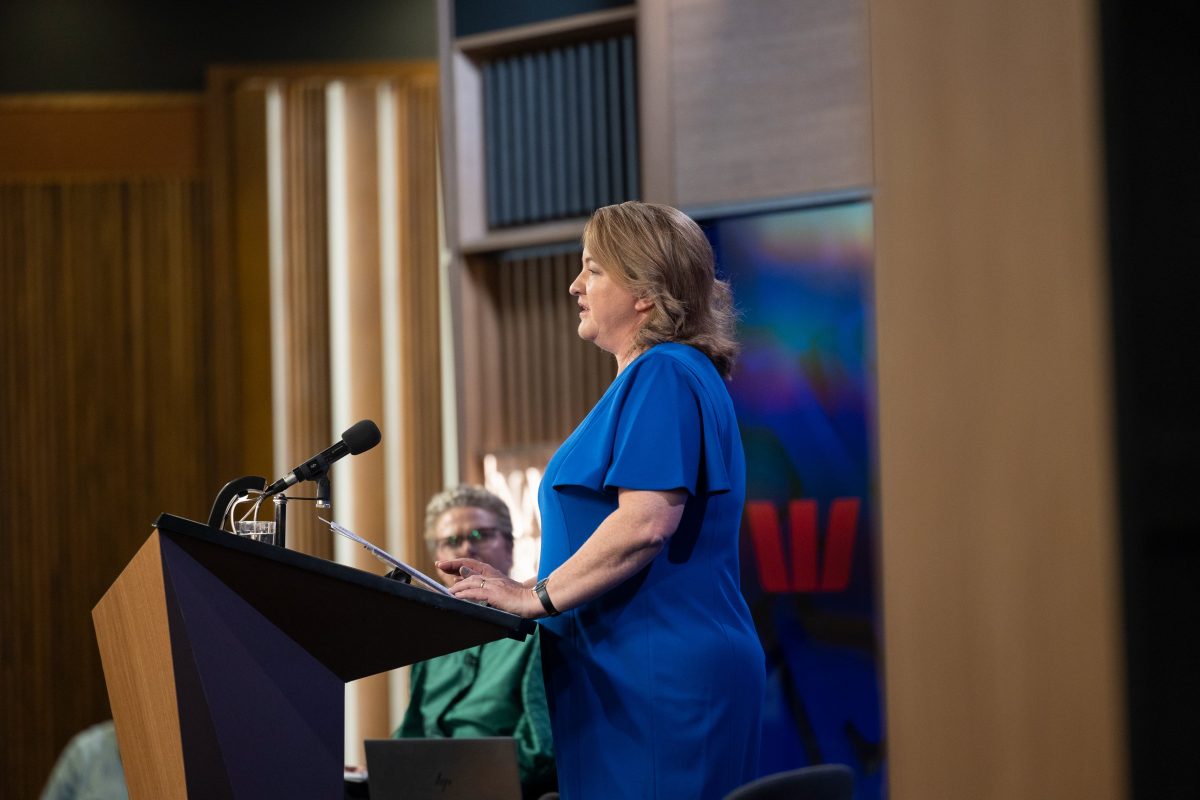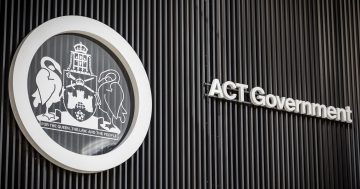
Mary Wooldridge addressed the National Press Club in March on ‘Accelerating gender equality in Australian workplaces’. Photo: Hilary Wardhaugh.
Women in the Federal Government’s workforce are earning, on average, 86 cents for every dollar men get – equating to $19,000 a year less.
Workplace Gender Equality Agency (WGEA) released a comprehensive report on Thursday (20 June), showing the average gender pay gap in the public sector is 13.5 per cent. It’s 8.2 percentage points lower (better) than the average total remuneration gender pay gap in the private sector of 21.7 per cent.
It marks the first comparable results of the gender pay gap and gender equality performance of the Commonwealth public sector, compared to Australia’s private sector.
The Commonwealth Public Sector Gender Equality Scorecard: Key Employer Results from 2022 is the first of a new annual report series publishing the results from Commonwealth public sector gender equality reporting to WGEA against the six gender equality indicators (GEIs).
WGEA chief executive officer Mary Wooldridge said the scorecard revealed progress had been made but more work remained in reducing the gender pay gap.
“A key message from this first Commonwealth Public Sector Gender Equality Scorecard is that good policies alone do not translate into outcomes. Positive change takes thought and deliberate action,” she said.
“The scorecard shows the Commonwealth public sector has benefitted from clearly articulated commitments and sector-wide reforms in areas the private sector finds difficult to change, such as gender balance in management positions.
“Commonwealth public sector employers are also taking actions to deliver flexibility that helps empower more women to take leadership roles and drives gender balance in key management positions.
“But more does need to be done across all employers to continue to reduce the gender pay gap, including to combat stereotypes that deter men from taking parental leave and around women in non-manager roles.”
Management positions in the public sector are gender-balanced overall, according to the scorecard.
It shows 48 per cent of all Commonwealth public sector employers have a gender-balanced management team, compared to 27 per cent in the private sector.
But men are 2.5 times more likely to be in the highest paying quartile, compared to 1.9 times in the private sector. This figure in the private sector is driven in part by highly paid non-manager roles – professionals, trades and technicians – which predominantly employ men.
Men account for 11 per cent of universal or primary carer’s leave taken (compared to 14 per cent in the private sector). Although 99 per cent of employers offer paid parental leave, just 13 per cent offer it universally without labels of ‘primary’ or ‘secondary’ carer.
This is significantly lower than the private sector at 21 per cent.
Other key results from the scorecard show the mid-point of employer gender pay gaps is lower than the private sector – 50 per cent of employers have a median total remuneration gender pay gap above 6.9 per cent, compared to 9.1 per cent for the private sector.
Three-quarters of employees in the Commonwealth public sector work full-time and nine per cent part-time, compared to 54 per cent and 21 per cent respectively in the private sector.
Women are more likely to work full-time (73 per cent) than in the private sector where almost three in five women (59 per cent) are employed part-time or casually.
This could reflect a normalisation of flexible working arrangements in the public sector.
Minister for Women and for the Public Service Katy Gallagher said the government was focussed on improving equality for women and the Commonwealth public sector should be a model employer.
“Earlier this year we published private sector gender pay gaps for the first time, now we’re shining a light on progress in the public sector on gender equality,” Senator Gallagher said.
“The private sector has been reporting to WGEA for a decade – now the Commonwealth public sector has stepped up and reported as well.
“The public sector should set a standard for promoting gender equality and WGEA reporting is a key part of that…”
But she said “there is more work to do”.
“For example, we know we need to encourage stronger uptake of parental leave by men, and part-time workers should not be overlooked for promotion.
“Positively, the public sector has achieved gender balance in every level of management as a result of setting targets and our focus on achieving them.”
The scorecard includes data for Australian Public Service departments and agencies, and public sector employers not under the umbrella of the Australian Public Service Commission (APSC).
The Respect@Work Report recommended public sector reporting to WGEA.
Subsequent legislation introduced by the Albanese Government requires Commonwealth public sector employers with 100 or more employees to submit gender equality reports to WGEA.
This includes Commonwealth entities and companies, and Australian Defence Force employees, which means results differ from the previously released APSC data.
Original Article published by Chris Johnson on Riotact.











